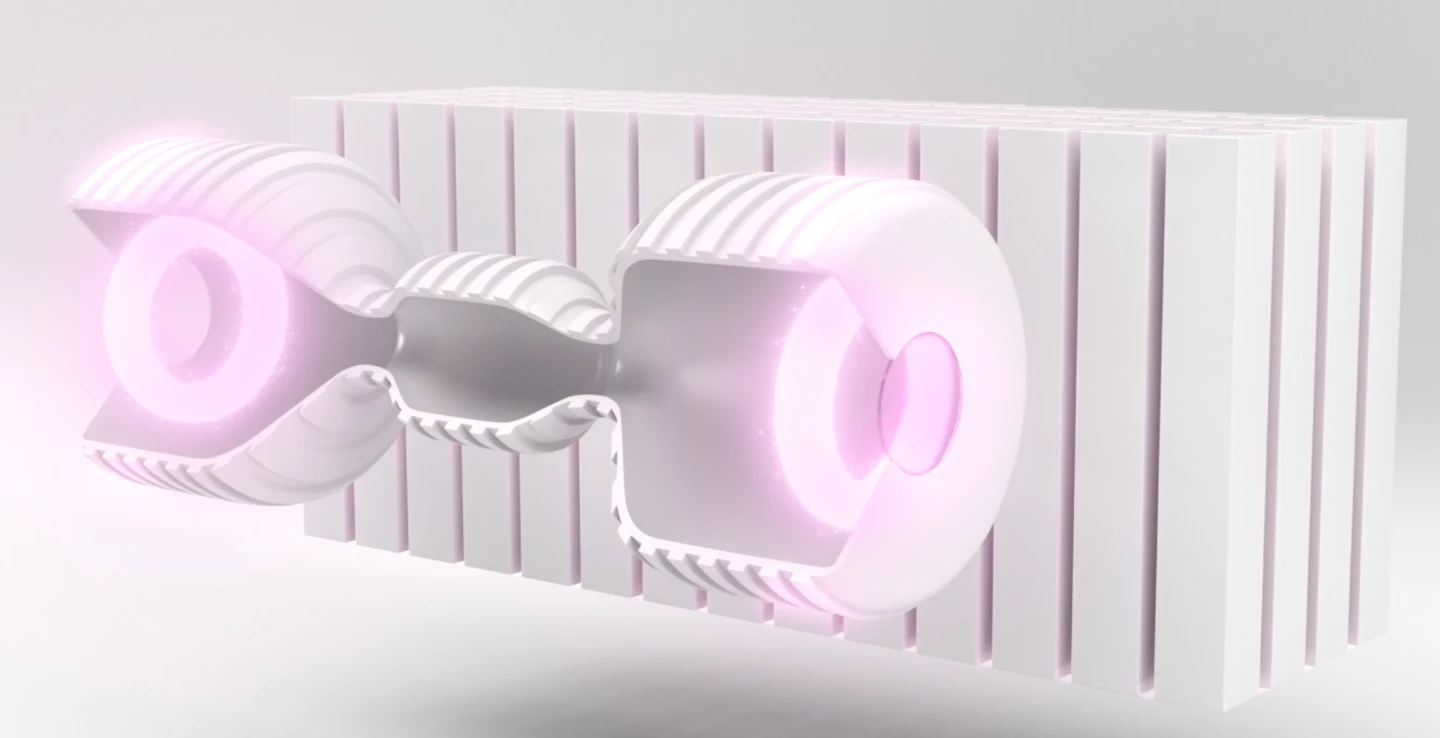Washington startup Helion Energy says its seventh-gen Polaris prototype will be the world's first fusion generator to demonstrate net electricity production, as early as 2024, and it's roped in a record-breaking funding round to get it built and running.
The Series E funding round was led by long-term investor Sam Altman, former president of Y Combinator and current CEO of OpenAI, who has now taken on an executive chairman role at Helion. Others involved include PayPal co-founder Peter Thiel, through his Mithril Capital company, former eBay president Jeff Skoll, through his Capricorn Investment Group, and Facebook co-founder Dustin Moskovitz.
The raise brings in a record US$500 million now, with an "opportunity for an additional US$1.7 billion dollars tied to Helion reaching key performance milestones." The money will be used to complete the Polaris facility currently under construction in Everett, Washington.
Polaris will expand on the impressive achievements of Helion's sixth-gen "Trenta" prototype, built in 2020, which has completed more than 10,000 high-power pulses, and has run "nearly every day" for more than 16 months. Earlier this year, Trenta managed to demonstrate a temperature over 100 million degrees Celsius, which is significant, since it's around the point at which there's enough thermal energy to create large amounts of fusion.

That was one of Helion's milestone achievements; it's also managed to sustain plasmas for longer than 1 millisecond, and achieved magnetic fields greater than 10 Tesla with which to compress plasmas during the fusion process.
Where many fusion projects aim to develop heat to create steam and drive turbines, Helion has demonstrated an electromagnetic approach it says is much more efficient. As deuterium and helium-3 ions in a high-beta plasma smash together and fuse, energy is released and the plasma expands. This expansion, says Helion, causes changes in the plasma's magnetic flux, which "push back on the magnetic field" generated by the magnets around the chamber, and this field interaction directly induces an electrical current which can be captured at high efficiency.
What's more, the company says it can recover "energy leftover from the input as well as new fusion reactions." Helion says it's "demonstrated energy recovery with 95 percent efficiency" and "demonstrated that its magnets run at 95 percent energy efficiency," all of which should help the overall equation.
Where Trenta is capable of running fusion pulses once every 10 minutes, the Polaris prototype will vastly increase this rate to around a pulse per second. The company expects it to generate "a small amount of net electricity as a byproduct of its fusion reactions" by 2024, which would make it the first fusion reactor in history to do so.

Strangely enough though, net electricity generation isn't actually the main goal of the Polaris prototype. The electricity will merely be a welcome byproduct of the system's main goal: producing helium-3 fuel by smashing deuterium atoms together. Helium-3 is viewed as an excellent fuel source – 15-20 tonnes of it per year might power every household in the United States – but it's difficult enough to produce that several entities have proposed the idea of capturing it from the Moon, where it's abundant, and bringing it back to Earth.
The eventual vision here, of course, is virtually limitless clean energy – humanity's dream weapon against climate change and virtually a license to print money if it comes to fruition. Helion co-founder and CEO David Kirtley told TechCrunch the company hopes to build fusion reactors the size of shipping crates, each generating around 50 megawatts, or roughly enough to power 8,200 US homes.
Helion projects it will generate electricity at rock-bottom prices of around $10 per MWh, and that's "without assuming any economies of scale from mass production, carbon credits or government incentives." This would make fusion one of the cheapest ways to produce power, if not the cheapest, less than a third the price of coal-fired power or today's solar PV installations.
Helion is now more or less in a race with MIT's upcoming SPARC reactor (slated for completion in 2025) to be the first to demonstrate net electricity production.
The downside here, of course, is fusion power's nasty habit of sorta not happening, which has made it a perennial punchline in the tech world. Clearly though, Helion has managed to sell its vision and potential to some pretty weighty entities here.
“I’m delighted to be investing more in Helion, which is by far the most promising approach to fusion I’ve ever seen,” said Altman. “With a tiny fraction of the money spent on other fusion efforts, and the culture of a startup, this team has a clear path to net electricity. If Helion is successful, we can avert climate disaster and provide a much better quality of life for people.”
Altman, though, is a relative spring chicken in the world of billionaires, at 37. Thiel and Skoll, on the other hand, being in their mid-50s, must be convinced this one's closer than the ol' 30 years away. Wouldn't it be something if they were right?
Source: Helion Energy







